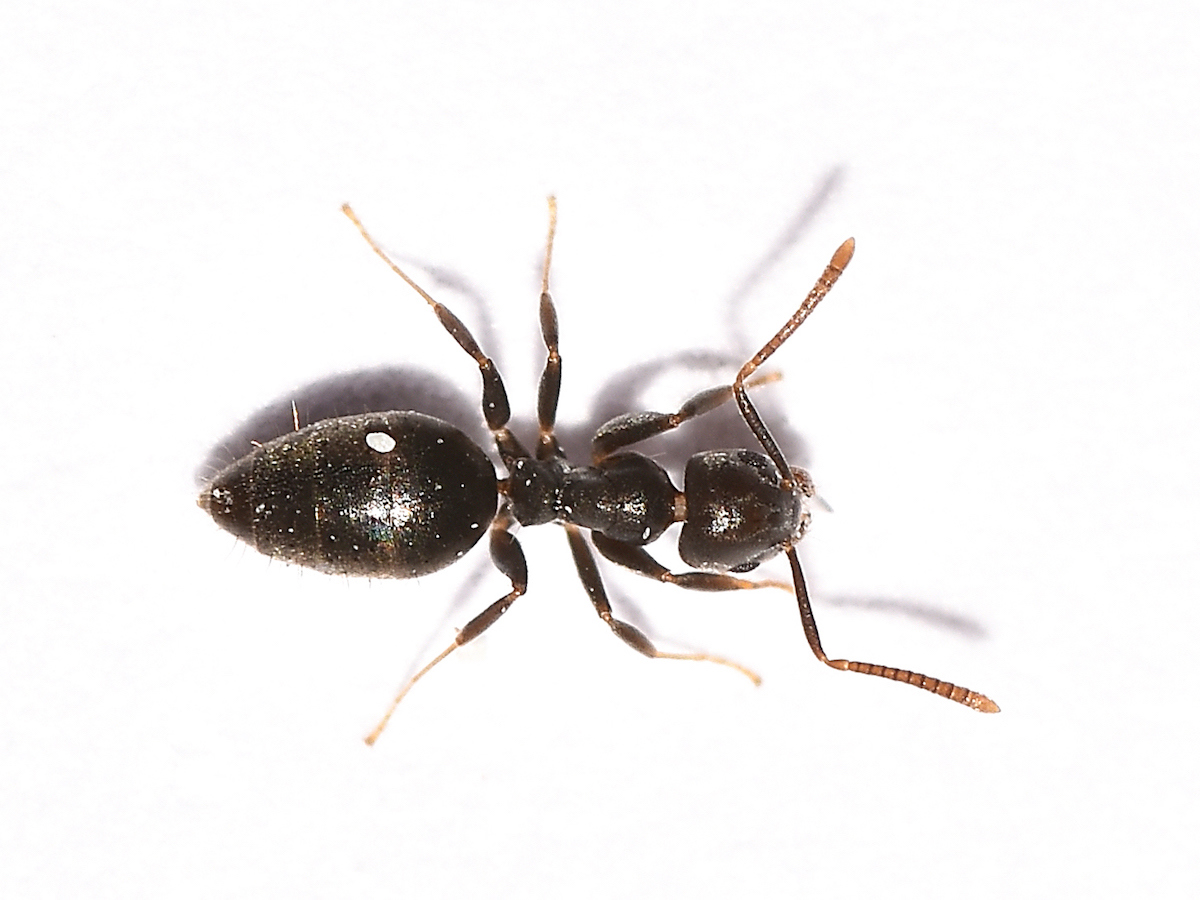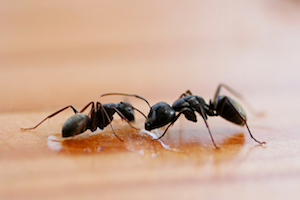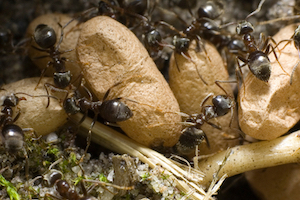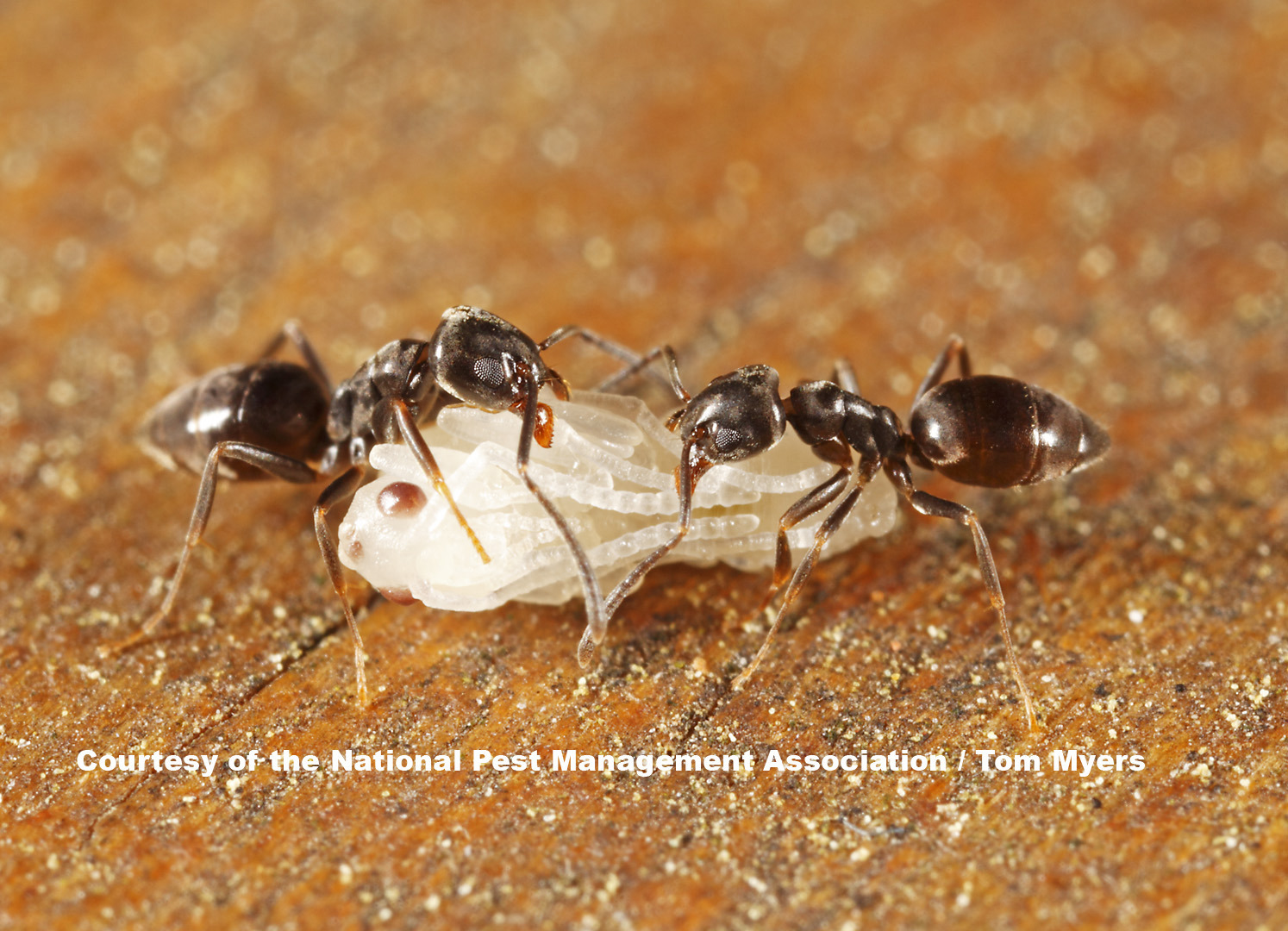White-footed Ants Technomyrmex spp.

Color: Black to brown body with pale yellowish-white tarsi or “feet”
Size: 1/8” (2.5-3 mm) long
Legs: Six
Antennae: Yes
Shape: Thorax lacks spine; profile unevenly rounded
What is a white-footed ant?
White-footed ants get their common name from their very light-colored feet. Mature colonies can range from 8,000 to 3 million individuals, with as many as 33 percent being reproductive.
White-footed ants prefer to feed on honeydew and nectar at night, and will readily invade homes in search of sweet liquids and water. Unlike most ants, foraging white-footed ants do not share their food with other ants. Instead, many of the sterile workers in the colony lay eggs, called trophic eggs, which serve as the food source for the larvae and the non-foraging adults.
White-footed ants infest both urban and rural habitats, as they spread to other areas through commerce, such as nursery stock and shipping containers. Preferred nesting sites are near moisture and food sources that also provide protection from predators and harsh environmental conditions.
Outdoors, this type of ant can likes to nest in moist microenvironments, including under loose bark or rocks, in decaying tree trunks and branches, and in old termite galleries. In homes, white-footed ants can be found nesting in wall voids, attics, under roof shingles, around skylights, and in kitchens and bathrooms.
White-footed ants don't have a stinger and do not cause any structural damage. However, they can become a nuisance if they find a way inside the home.
Nest location is ideal in the prevention of white-footed ants. Once the nest has been located, remove possible harborage sites, such as rocks, wood, concrete objects, etc. It's also important to seal any cracks or crevices on the exterior of the home.
Consider working with a licensed pest professional to employ a preventative pest management plan or treat an existing infestation.
If you suspect a white-footed ant infestation in your home, the best course of action is to contact a licensed pest control professional. They will conduct a thorough inspection to identify the full extent of the problem. Once the situation is properly identified, the appropriate control measures can be taken.
You can find a certified pest professional near you with the helpful zip code search below.




